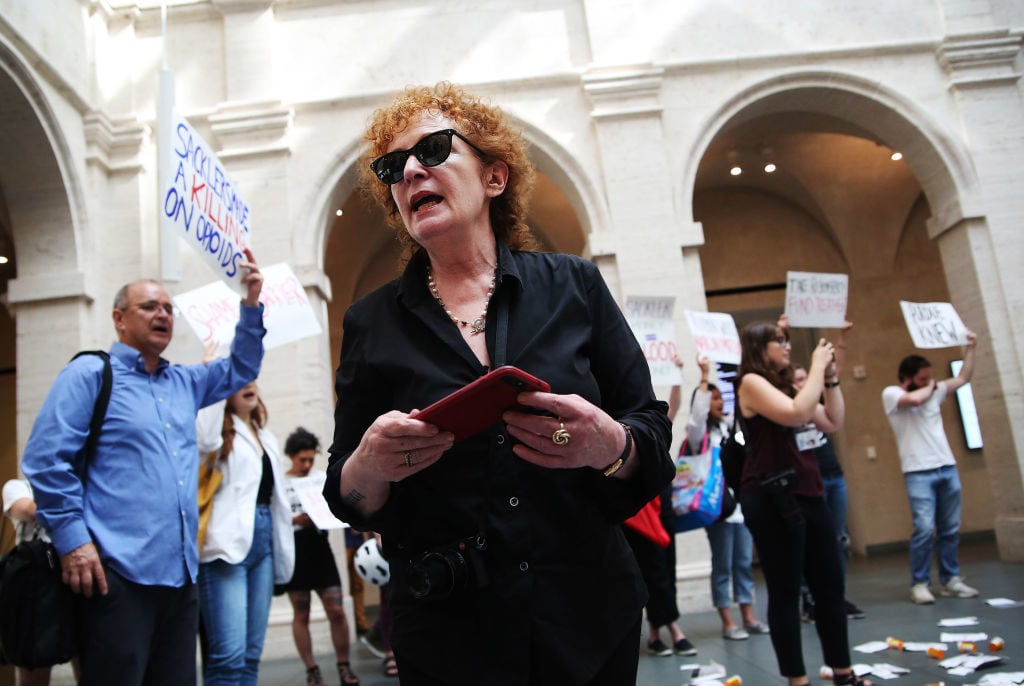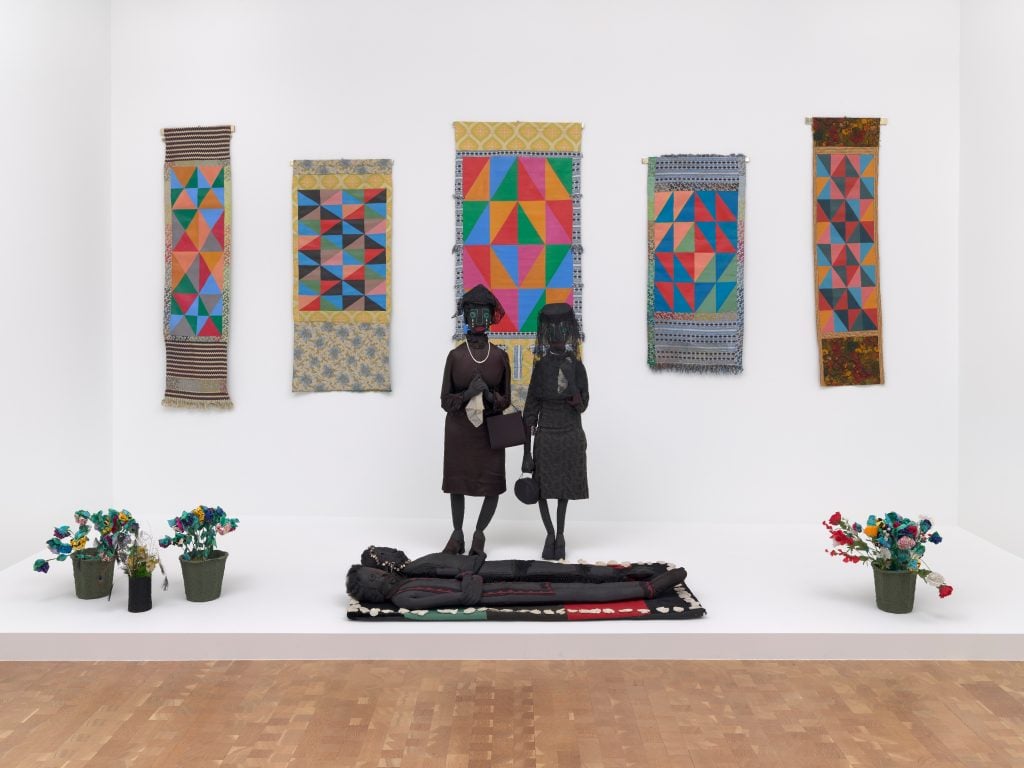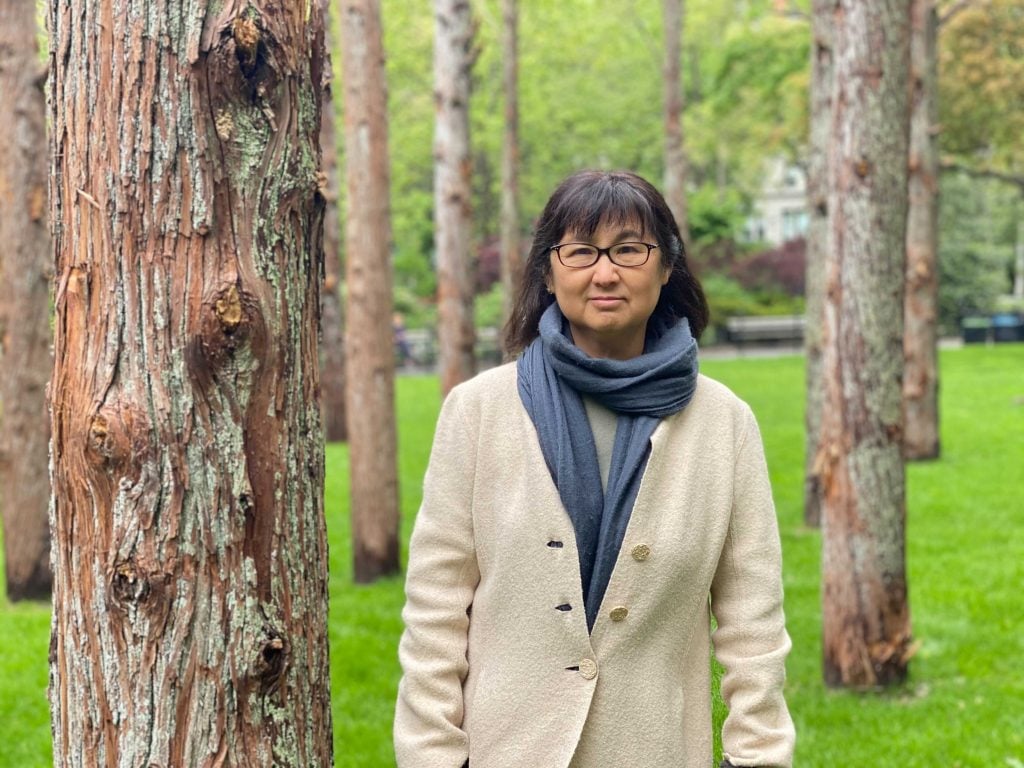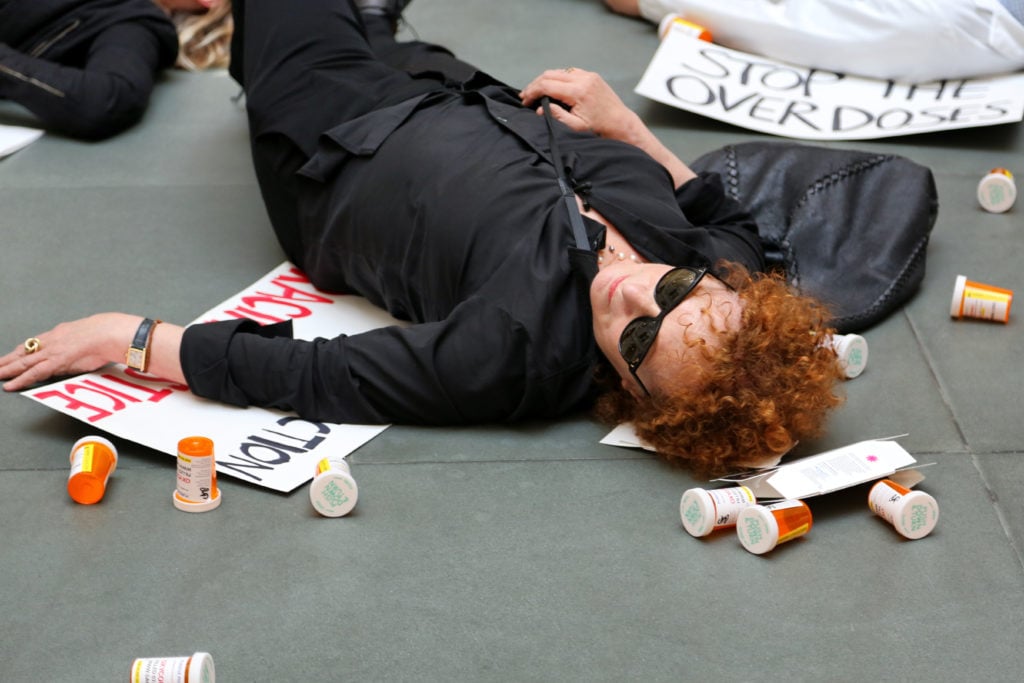Art World
Nan Goldin, Faith Ringgold, and Other Artists Make ‘TIME’ Magazine’s Annual List of the 100 Most Influential People of the Year
The annual list is based on the “soft power” of the individual’s ideas and the strength of their example.

The annual list is based on the “soft power” of the individual’s ideas and the strength of their example.

Caroline Goldstein

Time magazine has released its 2022 list of the 100 “Most Influential” people of the year, and in addition to bold-faced names like Volodymyr Zelensky, Zendaya, and Kris Jenner, there are a few noteworthy art-world stars including Faith Ringgold, Maya Lin, Francis Kéré, Nan Goldin, and Elizabeth Alexander.
The annual list is divided into categories of artists, innovators, titans, leaders, icons, and pioneers, with photographs accompanied by short essays penned by other cultural and political luminaries.
In the Artists section, artist Faith Ringgold is described by Thelma Golden, director and curator of the Studio Museum in Harlem, as a “Renaissance woman born in Harlem during its own Renaissance” who has “painted, sculpted, written, sewn, and incited change all her life.”

Faith Ringgold, The Wake and Resurrection of the Bicentennial Negro (1975-89). © Faith Ringgold / ARS, NY and DACS, London, courtesy ACA Galleries, New York 2022. Photo: Ron Amstutz; courtesy Glenstone Museum, Potomac, Maryland.
Now 91, Ringgold is finally being exalted by the mainstream art world after decades of marginalization. Her poignant quilts, paintings, and sculptures were the subject of two recent international exhibitions: a career retrospective at the New Museum, and a survey at London’s Serpentine Galleries that traveled to the Glenstone Museum in Potomac, Maryland.
Elsewhere on the list are architect Francis Kéré and artist Maya Lin. Kéré, who designed the Serpentine Pavilion in 2017, is the first Black person to win the Pritzker Prize, the field’s highest honor. The Burkinabe social activist “is a trailblazer for his long-standing commitment to formalizing space for both social and environmental good,” writes architect David Adjaye in the magazine (who himself made the list in 2017), adding that “his legacy lives not just in his built work but also in his general practice and methodological spirit.”

Maya Lin with Ghost Forest (2021) at Madison Square Park, New York. Photo by Sarah Cascone.
Maya Lin, writes novelist Celeste Ng, is an artist whose work “reveals inconvenient truths long ignored.” In her 2021 installation Ghost Forest. Lin took over Madison Square Park and planted a grove of 49 40-foot-tall white cedar trees sourced from New Jersey’s Pine Barrens, which is being decimated by saltwater inundation that drowns the native trees. The project, which was conceived before the pandemic, was even more affecting when it debuted in May 2021, as if each tree—described by Lin as a “sentinel”—was a witness to the traumas unfolding around it.
Elizabeth Alexander, a poet, essayist, and philanthropist was recognized by playwright Lynn Nottage, who describes the Andrew W. Mellon Foundation president as someone who “has put real investment into creating spaces that reflect the country’s rich diversity, and rethinking how we can embrace our cultural narratives, whether through physical monuments or the ways in which we tell our stories.”
In addition to helming the country’s largest funder of arts and education, in recent years Alexander has introduced the wider art world to the work of her late husband, Ficre Ghebreyesus, an Eritrean-born chef and painter who died suddenly at age 50. In 2016, Alexander published The Light of the World, a Pulitzer Prize-nominated memoir documenting the aftermath of Ghebreyesus’s death and honoring their life together.

Nan Goldin staging a ‘die-in’ at the Harvard Art Museums. Photo: TW Collins.
Finally, in the “Pioneers” section, photographer and activist Nan Goldin is recognized for her successful campaign to urge museums to cut ties with the Sackler family, who owned Purdue Pharma, the makers of the opioid OxyContin, to which Goldin was addicted to for many years. Patrick Radden Keefe, the journalist who documented the Sacklers’ nefarious marketing campaigns in the book Empire of Pain—which includes accounts of the Sacklers hiring a private investigator to tail Goldin—writes of the artist’s “series of elaborately choreographed protests” staged at museums around the world.
“With her impeccable eye and the zeal of a survivor, Goldin framed each protest like a photograph,” he wrote. At long last, “it worked. she placed a burning spotlight on the family, who recently reached settlements requiring them to pay $6 billion to help remediate the crisis. She pioneered a powerful new form of activism and started an urgent conversation about tainted money in the arts.”